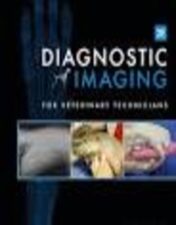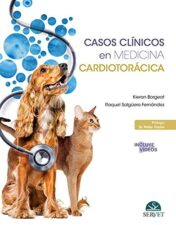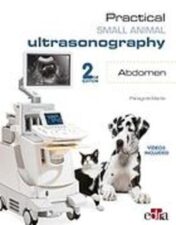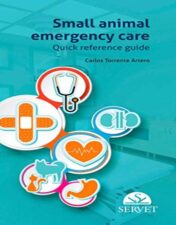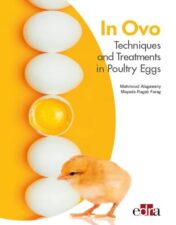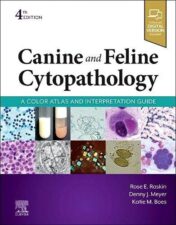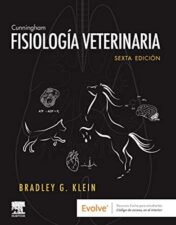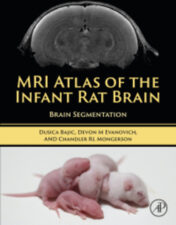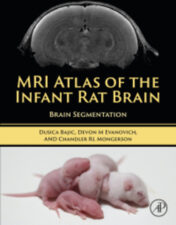Discover the Best Veterinary Books to Enhance Your Knowledge
Discover the Best Veterinary Books Now!
Are you looking for the best veterinary books to help you learn more about animal care? Look no further! At DentalBooks.net, we have a wide selection of orthodontics books that can help you become an expert in veterinary medicine. Our books are written by experienced professionals and cover topics such as anatomy, physiology, nutrition, and more. With our comprehensive selection, you’ll be able to find the perfect book to help you understand the complexities of veterinary medicine. Plus, our books are affordable and easy to read, so you can get the information you need without breaking the bank. So what are you waiting for? Discover the best veterinary books now and start learning more about animal care today!
Veterinary Books
Diagnostic Imaging for Veterinary Technicians, 2nd Edition 2022 High Quality Image PDF
Veterinary Books
Casos clínicos en Medicina Cardiotorácica 2021 epub+converted pdf
Veterinary Books
Bacterial Skin Infections in Small Animals 2019 epub+converted pdf
Veterinary Books
Veterinary Books
Practical Small Animals Ultrasonography. Abdomen_2nd Edition 2022 epub+converted pdf
Veterinary Books
Veterinary practice management. 2nd Edition 2022 epub+converted pdf
Veterinary Books
Veterinary Books
Veterinary Books
Los secretos de la recepción veterinaria 2022 epub+converted pdf
Veterinary Books
Canine and Feline Cytopathology, 4th edition 2022 Original PDF
Veterinary Books
Small Animal Critical Care Medicine, 3rd edition 2022 Original PDF
Veterinary Books
Cunningham. Fisiología veterinaria (6ª ed.) 2020 Original PDF
Introduction
Are you looking to enhance your knowledge of veterinary medicine? Look no further than our selection of the best veterinary books. Our carefully curated list includes books on a variety of topics, from animal anatomy and physiology to nutrition and behavior. Whether you're a veterinarian, vet tech, or pet owner, these books will help you gain a better understanding of veterinary medicine and provide valuable insight into caring for animals. With our selection of the best veterinary books, you can easily find the perfect book to expand your knowledge and become a more informed pet care provider.
Overview of Veterinary Medicine: A Guide to the Basics
Veterinary medicine is a field of medical science that focuses on the diagnosis, treatment, and prevention of diseases and injuries in animals. medicine is an important part of animal health care, as it helps to ensure the well-being of animals and their owners. Veterinary medicine is a complex and ever-evolving field, and it can be difficult for those new to the profession to understand the basics.
Overview of Veterinary Medicine: A Guide to the Basics is an essential resource for anyone interested in learning more about veterinary medicine. This comprehensive guide provides an overview of the fundamentals of veterinary medicine, including anatomy and physiology, clinical examination, diagnostic testing, pharmacology, surgery, nutrition, and preventive care. It also covers topics such as animal behavior, zoonotic diseases, and public health.
The book is written in an easy-to-understand style and includes helpful illustrations and diagrams to help readers better understand the material. It is organized into sections that cover the different aspects of veterinary medicine, making it easy to find the information you need. The book also includes case studies and real-world examples to help readers apply the concepts they learn to their own practice.
Overview of Veterinary Medicine: A Guide to the Basics is an invaluable resource for veterinarians, veterinary technicians, and students of veterinary medicine. It is an essential reference for anyone looking to gain a better understanding of the field of veterinary medicine. With its comprehensive coverage of the fundamentals of veterinary medicine, this book is sure to be a valuable addition to any library.
Animal Anatomy and Physiology for Veterinary Professionals
Animal Anatomy and Physiology for Veterinary Professionals is an essential resource for veterinary professionals. It provides a comprehensive overview of the anatomy and physiology of animals, including cats, dogs, horses, cows, pigs, sheep, goats, and other species. The book covers topics such as the structure and function of organs, tissues, and systems; the development of the animal body; and the effects of disease on the body. It also includes information on nutrition, reproduction, behavior, and genetics.
The book is divided into four sections: anatomy, physiology, nutrition, and behavior. In the anatomy section, readers will learn about the structure and function of the major organs and systems in animals, including the cardiovascular system, respiratory system, digestive system, endocrine system, reproductive system, and nervous system. This section also covers the development of the animal body from conception to adulthood.
In the physiology section, readers will learn about the processes that occur within the body, such as metabolism, respiration, circulation, digestion, excretion, and reproduction. This section also covers the effects of disease on the body, including how diseases affect the organs and systems.
The nutrition section covers the importance of proper nutrition for animals, including the types of nutrients needed, the sources of these nutrients, and the effects of malnutrition. This section also discusses the role of vitamins and minerals in animal health.
The behavior section covers the behavior of animals, including communication, socialization, and learning. This section also covers the effects of stress on animals and how to manage it.
Overall, Animal Anatomy and Physiology for Veterinary Professionals is an invaluable resource for veterinary professionals. It provides a comprehensive overview of the anatomy and physiology of animals, as well as information on nutrition, reproduction, behavior, and genetics. With its clear explanations and illustrations, this book is an essential resource for anyone interested in animal care.
Veterinary Surgery: Principles and Practice
Veterinary Surgery: Principles and Practice is a comprehensive textbook that provides an in-depth look at the principles and practice of veterinary surgery. It covers all aspects of veterinary surgery, from basic anatomy and physiology to advanced surgical techniques. The book is divided into four sections: Basic Principles, Surgical Techniques, Diagnostic Imaging, and Specialty Surgery.
The first section, Basic Principles, covers the fundamentals of veterinary surgery, including anatomy and physiology, surgical instruments, wound healing, and anesthesia. This section also includes chapters on preoperative and postoperative care, as well as pain management.
The second section, Surgical Techniques, covers the various types of surgical procedures used in veterinary medicine. Topics include soft tissue surgery, orthopedic surgery, neurosurgery, ophthalmic surgery, and minimally invasive surgery. Each chapter includes detailed descriptions of the procedure, as well as step-by-step instructions for performing the surgery.
The third section, Diagnostic Imaging, covers the use of imaging modalities such as radiography, computed tomography, magnetic resonance imaging, and ultrasound in veterinary surgery. This section also includes chapters on interventional radiology and nuclear medicine.
The fourth section, Specialty Surgery, covers the most common specialty surgeries performed in veterinary medicine. These include cardiothoracic surgery, oncologic surgery, urologic surgery, and reconstructive surgery. Each chapter includes detailed descriptions of the procedure, as well as step-by-step instructions for performing the surgery.
Overall, Veterinary Surgery: Principles and Practice is an invaluable resource for veterinarians, veterinary technicians, and veterinary students. It provides a comprehensive overview of the principles and practice of veterinary surgery, and is an essential reference for anyone involved in the field.
Veterinary Clinical Pathology: An Introduction
Veterinary Clinical Pathology: An Introduction is a comprehensive guide to the field of veterinary clinical pathology. It provides an overview of the principles and techniques used in the diagnosis and treatment of diseases in animals. The book covers topics such as laboratory tests, hematology, biochemistry, immunology, cytology, and molecular diagnostics. It also includes information on the use of laboratory tests in the diagnosis and management of common diseases in companion animals, horses, and livestock.
The book begins with an introduction to the field of veterinary clinical pathology, including its history, scope, and importance. It then discusses the basic principles of laboratory testing, including sample collection, specimen handling, and quality control. It also covers the fundamentals of hematology, biochemistry, immunology, and cytology. In addition, it provides an overview of the use of laboratory tests in the diagnosis and management of common diseases in companion animals, horses, and livestock.
The book also includes chapters on the use of molecular diagnostics in veterinary medicine, including PCR, ELISA, and other methods. It also covers the use of laboratory tests in the diagnosis and management of infectious diseases, endocrine disorders, and neoplasia. Finally, it provides an overview of the use of laboratory tests in the diagnosis and management of toxicological conditions.
Overall, Veterinary Clinical Pathology: An Introduction is an essential resource for veterinarians, veterinary technicians, and students interested in learning more about the field of veterinary clinical pathology. It provides a comprehensive overview of the principles and techniques used in the diagnosis and treatment of diseases in animals.
Veterinary Pharmacology and Therapeutics
Veterinary pharmacology and therapeutics is a branch of veterinary medicine that focuses on the use of drugs to diagnose, treat, and prevent diseases in animals. It involves the study of the action of drugs on animals, their metabolism, absorption, distribution, and excretion, as well as the effects of drugs on animal physiology and behavior. Veterinary pharmacologists and therapeutists are responsible for developing safe and effective treatments for animals, as well as monitoring the safety and efficacy of existing drugs.
The primary goal of veterinary pharmacology and therapeutics is to ensure the safe and effective use of drugs in animals. This includes understanding the pharmacokinetics and pharmacodynamics of drugs, as well as the potential adverse reactions and interactions with other drugs or substances. Veterinary pharmacologists and therapeutists must also be knowledgeable about the legal aspects of drug use in animals, including labeling requirements, prescription writing, and record keeping.
In addition to understanding the pharmacology of drugs, veterinary pharmacologists and therapeutists must also be familiar with the various routes of administration, such as oral, topical, injectable, and inhalation. They must also be knowledgeable about the different types of drugs available, including antibiotics, anti-inflammatory agents, anesthetics, anticonvulsants, and antiparasitics.
Veterinary pharmacologists and therapeutists must also be able to interpret laboratory results and make appropriate therapeutic decisions based on the results. They must also be able to recognize signs of drug toxicity and take appropriate steps to minimize the risk of adverse reactions.
Finally, veterinary pharmacologists and therapeutists must be able to communicate effectively with clients and other healthcare professionals. They must be able to explain the risks and benefits of drug therapy, as well as provide education and support to pet owners.
Conclusion
In conclusion, veterinary books are an invaluable resource for anyone looking to enhance their knowledge of animal health and care. With a wide variety of topics covered, from anatomy and physiology to nutrition and behavior, there is something for everyone. Whether you’re a veterinarian, vet tech, or pet owner, these books can help you stay up-to-date on the latest developments in veterinary medicine. With the right book, you can become an expert in no time!
Here are the top 10 best veterinary books that every practitioner and student should have in their library:
- Small Animal Internal Medicine, 5th Edition by Richard W. Nelson and C. Guillermo Couto
- BSAVA Manual of Canine and Feline Neurology, 3rd Edition edited by Simon Platt and David Volk
- Saunders Comprehensive Review for the NAVLE by Diane McKelvey
- Equine Internal Medicine, 3rd Edition by Stephen Reed and Warwick Bayly
- Textbook of Veterinary Diagnostic Radiology, 7th Edition by Donald Thrall and Ian D. Robertson
- Manual of Equine Field Surgery by John Kohnke and N. Warwick Bayly
- Handbook of Small Animal Practice, 5th Edition edited by Rhea V. Morgan and Ronald Bright
- BSAVA Manual of Canine and Feline Endocrinology, 5th Edition edited by David S. Bruyette
- Equine Ophthalmology, 2nd Edition by Kevin C. Corley and Richard A. Dubielzig
- Small Animal Clinical Nutrition, 5th Edition edited by Michael S. Hand, Darrell L. Wayne, and Tommy Y. T. Chiu
Whether you're looking to expand your knowledge or stay current with the latest advances in veterinary medicine, these books are essential resources for anyone working in the field. They provide a wealth of information, practical tips, and expert guidance, making it easier to diagnose, treat, and care for all kinds of animals.

